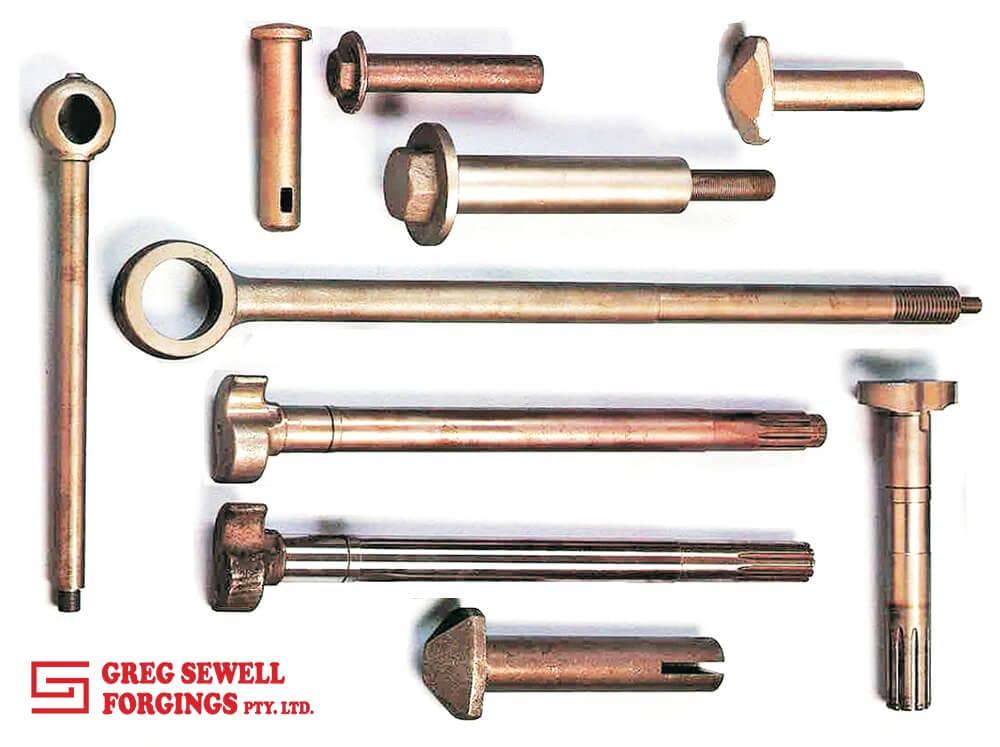Closed die forging serves precision manufacturing and is a cornerstone for strength, durability, and versatility in producing metal components. From eyenuts to U bolts, closed die forging is pivotal in creating superior parts for many industries. This comprehensive exploration delves into the intricacies of closed die forging. We discover its process, applications, and importance within the greater realm of metalworking.
Understanding Closed Die Forging
Closed die forging excels as an advanced metalworking technique called impression die forging because it turns heated metal billets into intricately shaped components. After completing the process, the heated metal billet is carefully sandwiched between two or more dies, precisely crafted to hold a pre-designed cavity that matches the desired component’s shape.
With precision, precision, and finesse, the dies apply tremendous pressure to force the billet into and fill all cavities of the die cavity. As a result, instead of metal, it can be said that metal is now a carefully crafted part that will possess incredible dimensional accuracy, unique mechanical qualities, and a flawlessly smooth surface finish.
The Closed Die Forging Process
The closed die forging process encompasses a series of meticulously orchestrated stages, commencing with the meticulous selection of materials tailored to the specific requirements of the crafted component. The chosen material undergoes meticulous preparation, whether steel, aluminium, or titanium alloys. It is heated to precise temperatures to enhance its plasticity and render it more amenable to deformation during the forging process. Once the billet reaches the optimal temperature, it is carefully positioned between the meticulously crafted dies, each intricately designed to replicate the desired component form.
The dies—manually and hydraulically—thrust the heated billet at high speeds with heavy pressure, albeit to shape a special cavity, groove, or inverted profile. After forging, the workpiece could be subjected to a series of secondary operations: cut, chamfered, or machined, then heat treated. These steps are all intended precisely to `develop’ the product’s characteristics and render it to meet final specifications tailored for its intended use.
Applications of Closed Die Forging
Because closed die forging can produce complex profiles and high tensile strength components, its applications are broadly based. Thus, the process almost invariably makes critical applications such as eyenuts, U-bolts, and other fasteners, guaranteeing that they will perform and be serviceable. In addition to fasteners, closed die forging is applied to parts for automobiles and aircraft, industrial machinery, etc., where precision and strength are again required.
Benefits of Closed Die Forging
Closed die forging offers numerous benefits over alternative manufacturing methods, including:
- Enhanced Strength and Durability: Components produced by methods where dies are closed do very well in terms of mechanical properties. It possesses high impact toughness, increased fatigue resistance, and increased tensile strength.
- Improved Dimensional Accuracy: Because the die cavities are so precise, you get very close tolerances and uniform pieces at the end. Thus, there’s no need for additional machining operations to achieve these goals.
- Cost Efficiency: With a closed die forging, even though the tooling costs more upfront, it is almost always proven significantly less expensive for high-volume production runs because of their rapid cycle times and minimal material waste.
- Versatility: Closed die forging carries many materials, sizes, and shapes. So even those completely different parts, in practical terms, need not be made by diversifying the process; they can be produced in one (closed die forging).
Closed Die Forging in Custom Metal Fabrication
Closed die forging is one of the techniques in custom metal fabrication. This provides tailor-made parts for any customer’s needs, be they customer-made precision automotive parts or earnest heavy industry components. By closing complex shapes into a one-piece workpiece with superior strength and durability and sure geometries or clearances, you add value to custom metal fabrication jobs.
The Role of Closed Die Forging in Eyenuts and U Bolts Supply
Classic eyenuts and U bolts supplier are some of the most common fastening components used in construction and maintenance work and the marine industry. Closed die forging ensures uniform quality, accurate size tolerances, and dependable performance to meet the high demands of many critical applications.
Innovation and Advancements in Closed Die Forging
The field of closed die forging continues to evolve with materials, technologies, and process optimisation advancements. Innovations such as computer-aided design (CAD), simulation software, and automated forging systems enhance productivity, reduce lead times, and improve part quality. Additionally, research into new materials and alloy compositions expands the capabilities of closed-die forging, opening doors to new applications and industries.
Conclusion
Closed die forging is a testament to the artistry and science of precision manufacturing. With its ability to produce high-strength components with complex geometries, closed die forging is vital in various industries, from automotive to aerospace and custom metal fabrication. Eyenuts, U bolts, and other forged components exemplify the reliability, durability, and performance that closed die forging brings to critical applications. As innovations continue to drive the field forward, closed die forging remains at the forefront of metalworking, shaping the future of manufacturing with its unrivalled precision and versatility.








Comments